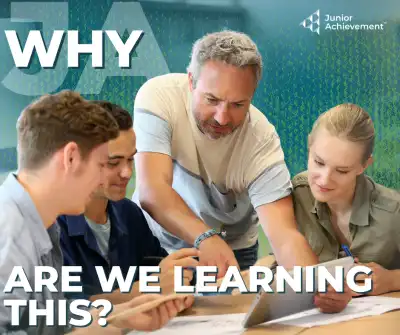Students Are Asking: “Why Are We Learning This?”— And That’s a Good Thing
Author: Elizabeth Stepanek
Corporate Responsibility
Published:
Thursday, 21 Aug 2025
Sharing

Image caption: Enter an image caption
If you've spent time in a classroom recently, you've probably heard a student ask:
“Why are we learning this?”
At first, it might sound like defiance or disinterest. But in reality, it’s one of the most important questions a student can ask—because it signals a desire for meaning, relevance, and connection. And in today’s world, those elements are essential to authentic learning.
The good news? Educators have the power to turn that question into curiosity, motivation, and engagement.
The Relevance Gap in Education
We’re teaching a generation that’s more connected, socially aware, and purpose-driven than before. They want to understand how their learning connects to their lives, communities, and futures. And when that connection isn’t clear, disengagement follows.
This growing relevance gap isn’t about traditional teaching methods—it’s about a shift in what student’s value. They’re not just asking for answers; they’re asking for meaning.
So, when students ask, “Why are we learning this?”, they’re not tuning out. They’re reaching out.
Reframing the Question
Instead of viewing this question as a challenge, educators can embrace it as an opening:
- “Why are we learning this?” → “How can I make this meaningful?”
- “When will I ever use this?” → “Where does this show up in real life?”
- “What’s the point?” → “How does this help me succeed or contribute?”
Every subject, literature, science, history—has real-world relevance. But it’s up to us to make that relevance visible and tangible.
Strategies to Make Learning More Meaningful
Here are a few practical ways educators can bridge the gap between academic content and students’ desire for real-world connection:
- Start with the “Why”
Introduce new topics by showing their real-life impact. Ask:
- How is this used in a job or industry?
- How does this relate to a problem in the world today?
- What does this help us understand ourselves or others?
Example: Before starting a unit on percentages, show students how it's used in budgeting, tipping, or business profit margins.
Connect Content to Careers
Students often disengage because they can’t see how learning leads to opportunity. Introducing career paths, especially ones they’ve never considered, can reframe their perspective.
This is where Junior Achievement shines. JA connects students with volunteers from the workforce who help students:
- Explore career options across industries
- Practice real-world decision-making
- Understand how classroom skills apply to work and life
Let Students Apply What They Learn
Project-based learning, service learning, and student-led activities bring relevance to life. When students do something with their knowledge, they see its value.
Examples:
- Design a marketing plan for a real or imaginary product
- Create a personal budget or financial plan
- Pitch a community improvement idea to local leaders
These types of experiences also build key soft skills like problem-solving, collaboration, and communication.
Encourage Student Voice and Choice
Let students shape what or how they learn. When they have ownership, their motivation increases—and so does the relevance.
- Offer multiple ways to show mastery (videos, presentations, essays, prototypes)
- Invite students to choose topics or issues that matter to them
- Create space for current events and open dialogue
Relevance Leads to Readiness
In an era of rapid change, students need more than facts—they need to understand how to apply, adapt, and lead. Making learning relevant isn’t just about engagement; it’s about preparing students for the future.
When we help students connect school to the real world, we’re not just answering “why are we learning this?” we’re showing them how to turn knowledge into action.
Final Thoughts
“Why are we learning this?” is a powerful question. When educators take it seriously—and respond with purpose, we unlock new levels of engagement, confidence, and career readiness.
Junior Achievement supports this mission by bringing real-world learning into the classroom, helping students see that what they’re learning today matters tomorrow.
We use cookies to provide you a personalized experience. How we do this is by analyzing user behavior on our site and sharing data with our advertising and analytics partners. You consent to our cookie policy if you continue to use this website.









